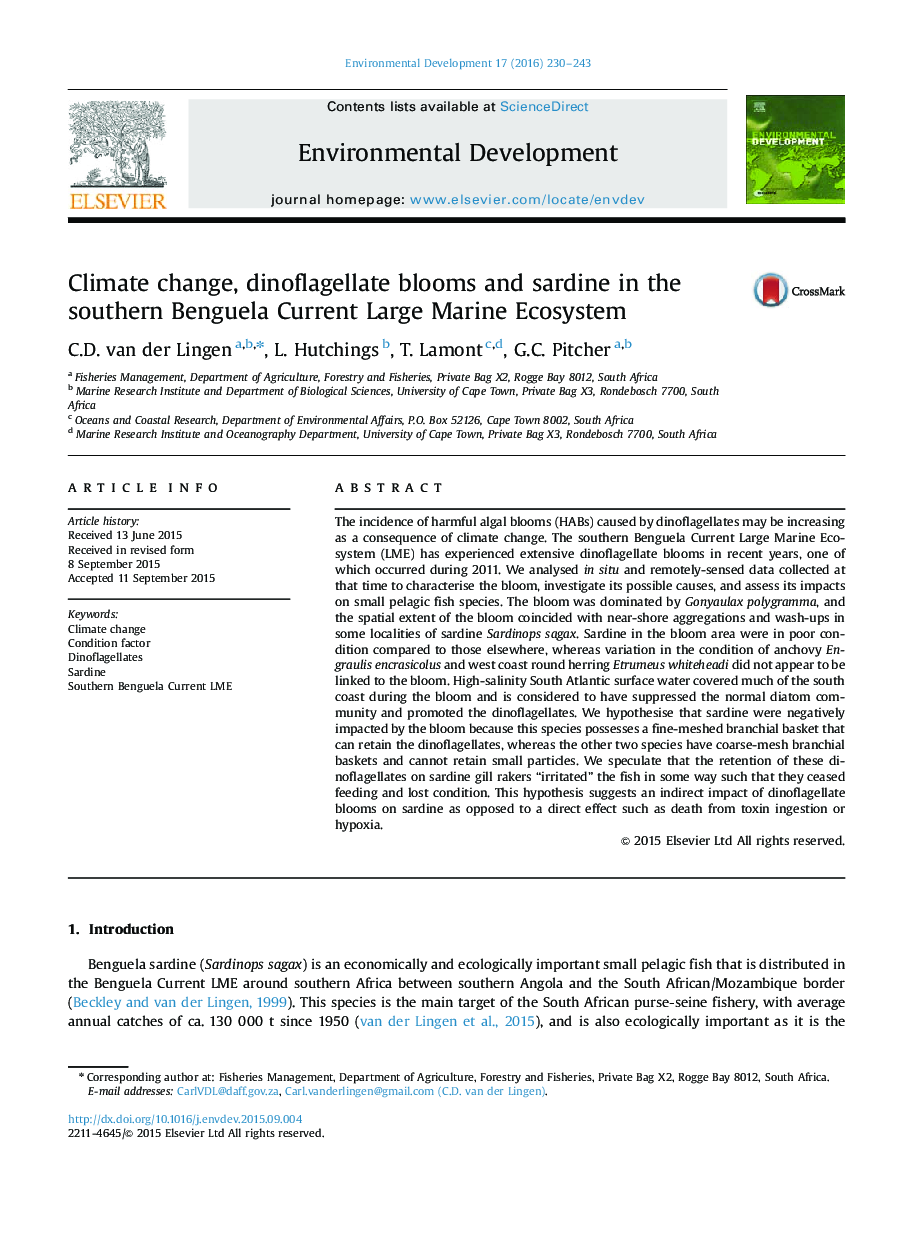| کد مقاله | کد نشریه | سال انتشار | مقاله انگلیسی | نسخه تمام متن |
|---|---|---|---|---|
| 4391389 | 1305318 | 2016 | 14 صفحه PDF | دانلود رایگان |
• Extensive dinoflagellate blooms have occurred in the southern Benguela recently.
• Α bloom in austral 2011 was associated with anomalous westerly winds.
• Sardine within the bloom were in poor condition whereas other clupeoids were not.
• This interspecific difference is due to differences in branchial basket morphology.
• Sardine may be susceptible to indirect negative impacts of dinoflagellate blooms.
The incidence of harmful algal blooms (HABs) caused by dinoflagellates may be increasing as a consequence of climate change. The southern Benguela Current Large Marine Ecosystem (LME) has experienced extensive dinoflagellate blooms in recent years, one of which occurred during 2011. We analysed in situ and remotely-sensed data collected at that time to characterise the bloom, investigate its possible causes, and assess its impacts on small pelagic fish species. The bloom was dominated by Gonyaulax polygramma, and the spatial extent of the bloom coincided with near-shore aggregations and wash-ups in some localities of sardine Sardinops sagax. Sardine in the bloom area were in poor condition compared to those elsewhere, whereas variation in the condition of anchovy Engraulis encrasicolus and west coast round herring Etrumeus whiteheadi did not appear to be linked to the bloom. High-salinity South Atlantic surface water covered much of the south coast during the bloom and is considered to have suppressed the normal diatom community and promoted the dinoflagellates. We hypothesise that sardine were negatively impacted by the bloom because this species possesses a fine-meshed branchial basket that can retain the dinoflagellates, whereas the other two species have coarse-mesh branchial baskets and cannot retain small particles. We speculate that the retention of these dinoflagellates on sardine gill rakers “irritated” the fish in some way such that they ceased feeding and lost condition. This hypothesis suggests an indirect impact of dinoflagellate blooms on sardine as opposed to a direct effect such as death from toxin ingestion or hypoxia.
Journal: Environmental Development - Volume 17, Supplement 1, January 2016, Pages 230–243
